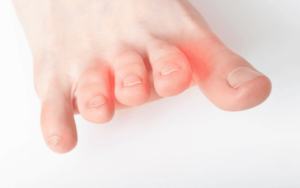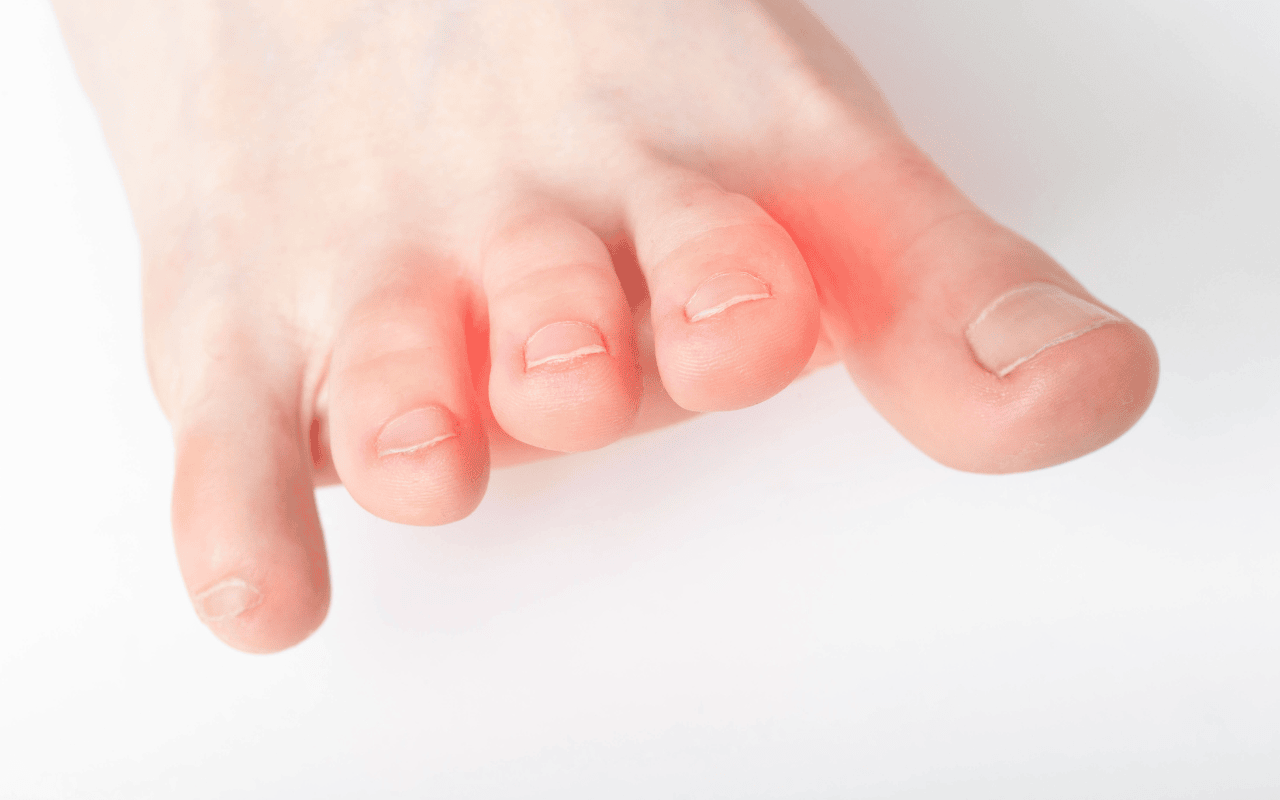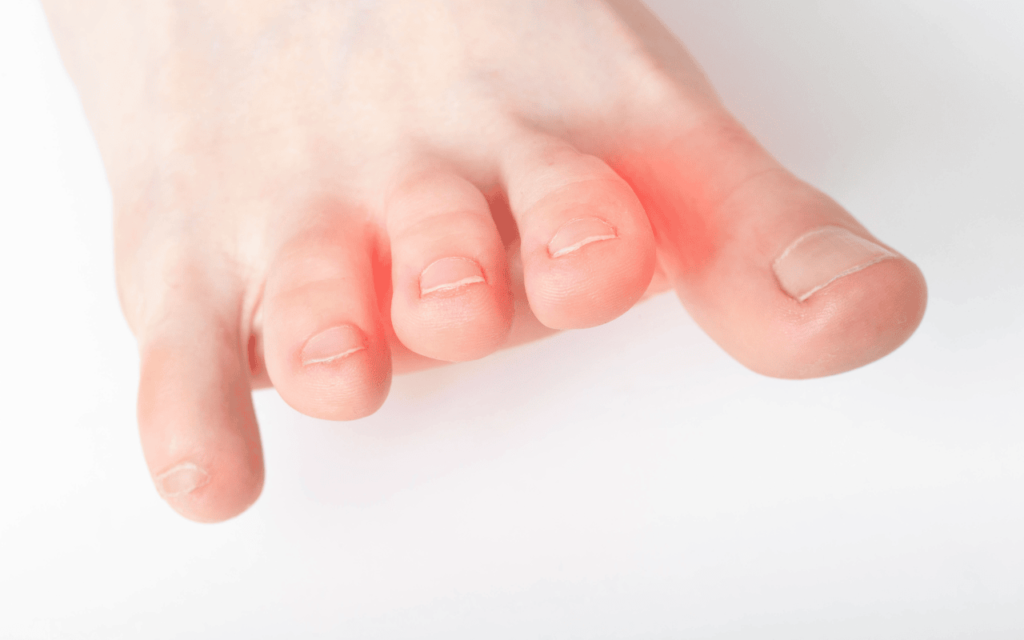What is Morton’s Neuroma?
Morton’s neuroma, also known as intermetatarsal neuroma, is a painful condition that involves a thickening of the tissue around one of the nerves leading to the toes. This can result in a sharp, burning pain in the ball of the foot. It is caused by compression and irritation of the nerve, leading to inflammation and the development of a benign growth of nerve tissue. The condition is more common in women than in men, often attributed to the wearing of high heels and narrow-toed shoes that can compress the forefoot and force the metatarsal heads together, leading to irritation of the nerve. If you’re experiencing foot pain, it’s essential to consult experts like the renowned foot doctors at TX Foot and Ankle Consultants, led by Dr. Raymond Delpak.
Morton’s neuroma can also be triggered by certain activities that put repetitive pressure on the forefoot, such as running or participating in sports that involve pivoting and pushing off from the toes. Understanding the risk factors and activities that can contribute to the development of Morton’s neuroma is key to both prevention and effective management of the condition.
Causes of Morton’s Neuroma
The primary cause of Morton’s neuroma is the compression and irritation of the nerve between the metatarsal heads of the foot. This compression can be attributed to various factors, including wearing high heels or shoes with a narrow toe box, which can force the toes into a cramped space, leading to compression of the nerve. Additionally, engaging in high-impact activities that involve repetitive pressure on the forefoot, such as running or participating in certain sports, can contribute to the development of Morton’s neuroma.
Other potential causes of Morton’s neuroma include foot deformities, such as bunions or hammertoes, which can alter the alignment of the toes and lead to increased pressure on the nerves. Understanding the underlying causes of Morton’s neuroma is essential for implementing preventive measures and seeking appropriate treatment to alleviate the associated discomfort and pain.
Symptoms of Morton’s Neuroma
Recognizing the symptoms of Morton’s neuroma is crucial for early intervention and effective management of the condition. Individuals affected by Morton’s neuroma may experience a range of symptoms, including a feeling of a pebble in the shoe, a burning sensation in the ball of the foot, or numbness in the toes. Discomfort and pain in the forefoot, particularly between the affected metatarsal heads, may also be present, often exacerbated by wearing tight or constrictive footwear.
The symptoms of Morton’s neuroma can vary in intensity, with some individuals experiencing intermittent discomfort, while others may endure persistent pain that significantly impacts their daily activities. By understanding and identifying the symptoms associated with Morton’s neuroma, individuals can seek timely medical evaluation and explore suitable treatment options to alleviate their discomfort and improve their overall foot health.
Diagnosing Morton’s Neuroma
Diagnosing Morton’s neuroma typically involves a comprehensive assessment of the patient’s medical history, physical examination, and diagnostic tests to accurately identify the condition. During the physical examination, the healthcare provider may palpate the forefoot to elicit tenderness and assess for the presence of a mass or thickening in the affected area. Additionally, specific maneuvers, such as the Mulder’s click test, may be performed to reproduce the symptoms and aid in the diagnosis of Morton’s neuroma.
Diagnostic imaging studies, including X-rays, ultrasound, or magnetic resonance imaging (MRI), may be utilized to visualize the affected area and confirm the presence of Morton’s neuroma. These diagnostic tools can provide valuable insights into the underlying pathology, aiding in the formulation of an appropriate treatment plan. By accurately diagnosing Morton’s neuroma, healthcare providers can tailor interventions to address the specific needs of each individual and promote optimal outcomes.
Treatment options for Morton’s Neuroma
When it comes to treating Morton’s neuroma, individuals have a range of options to alleviate discomfort and improve their foot health. The choice of treatment modality may depend on the severity of the condition, the individual’s overall health, and their preferences regarding conservative or surgical interventions. Understanding the available treatment options and their potential benefits is essential for individuals seeking relief from the symptoms of Morton’s neuroma.
Non-surgical treatments for Morton’s Neuroma
Conservative, non-surgical treatments are often the initial approach to managing Morton’s neuroma, aiming to alleviate discomfort and reduce the impact of the condition on one’s daily activities. These non-invasive interventions may include modifying footwear to alleviate pressure on the forefoot, incorporating padding or orthotic devices to provide cushioning and support, and utilizing corticosteroid injections to reduce inflammation and alleviate pain.
Physical therapy and targeted exercises may also be recommended to improve foot mechanics and alleviate pressure on the affected nerve. Additionally, oral medications, such as nonsteroidal anti-inflammatory drugs (NSAIDs), may be prescribed to manage pain and inflammation associated with Morton’s neuroma. By exploring non-surgical treatment options, individuals can address their symptoms and potentially avoid the need for more invasive interventions.
Surgical options for Morton’s Neuroma
In cases where non-surgical interventions fail to provide adequate relief, surgical options may be considered to address Morton’s neuroma. Surgical procedures for Morton’s neuroma aim to release the pressure on the affected nerve and alleviate associated discomfort. Common surgical approaches include nerve decompression, where the tissue around the affected nerve is released to reduce compression, and nerve removal, which involves excising the affected portion of the nerve to alleviate pain and discomfort.
Surgical interventions for Morton’s neuroma are typically performed on an outpatient basis, allowing individuals to return home on the same day as the procedure. By discussing the potential benefits and risks of surgical options with their healthcare provider, individuals can make informed decisions regarding their treatment and take proactive steps towards addressing Morton’s neuroma effectively.
Recovery and rehabilitation
Following non-surgical or surgical interventions for Morton’s neuroma, individuals may undergo a period of recovery and rehabilitation to optimize their foot health and function. Recovery from non-surgical treatments may involve gradually resuming regular activities while adhering to footwear modifications and therapeutic exercises to support foot mechanics and alleviate pressure on the affected nerve.
For individuals who undergo surgical procedures, postoperative care and rehabilitation are crucial for facilitating optimal healing and restoring foot function. This may involve wearing supportive footwear, engaging in physical therapy to strengthen the foot and improve mobility, and following the healthcare provider’s recommendations for gradual return to regular activities. By actively participating in the recovery and rehabilitation process, individuals can enhance their outcomes and minimize the risk of recurrent symptoms.
Prevention of Morton’s Neuroma
Taking proactive measures to prevent the development or exacerbation of Morton’s neuroma is essential for maintaining optimal foot health. Individuals can reduce their risk of developing Morton’s neuroma by wearing properly fitting footwear with adequate room for the toes and forefoot, avoiding high heels and narrow-toed shoes that can compress the forefoot and increase pressure on the nerves.
Engaging in low-impact activities and incorporating supportive footwear during high-impact sports can also help minimize the risk of developing Morton’s neuroma. Additionally, maintaining a healthy weight, practicing good foot hygiene, and seeking prompt medical evaluation for any foot discomfort are essential components of preventive care. By implementing preventive measures, individuals can reduce the likelihood of developing Morton’s neuroma and promote long-term foot health.
Conclusion
In conclusion, gaining a comprehensive understanding of Morton’s neuroma, including its causes, symptoms, and available treatment options, is essential for individuals experiencing foot discomfort and pain. By recognizing the risk factors and activities that can contribute to the development of Morton’s neuroma, individuals can take proactive steps to prevent the condition and maintain optimal foot health. Whether exploring non-surgical treatments or considering surgical options, seeking timely medical evaluation and personalized interventions can make a significant difference in managing and overcoming Morton’s neuroma. Through a combination of preventive measures, appropriate treatments, and active participation in the recovery process, individuals can alleviate discomfort, improve foot function, and enhance their overall quality of life. If you’re in the Texas area, trust TX Foot and Ankle Consultants, home to the best foot doctors, led by Dr. Raymond Delpak. Don’t let foot pain hinder your daily activities – schedule a consultation today and take the first step towards healthier, pain-
 free feet. Your feet deserve the best care, and the experts at TX Foot and Ankle Consultants are here to provide it.
free feet. Your feet deserve the best care, and the experts at TX Foot and Ankle Consultants are here to provide it.


